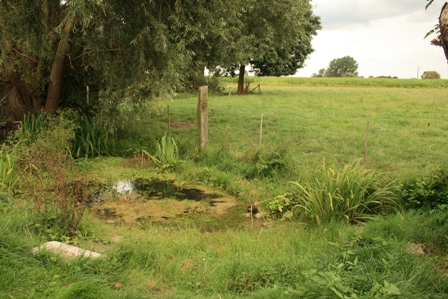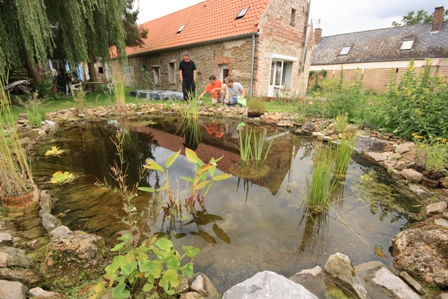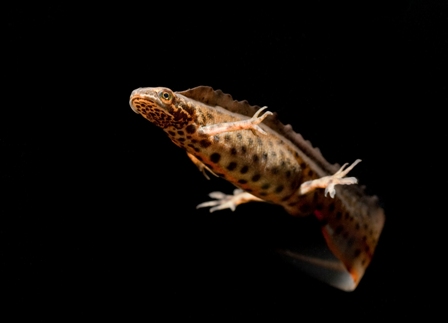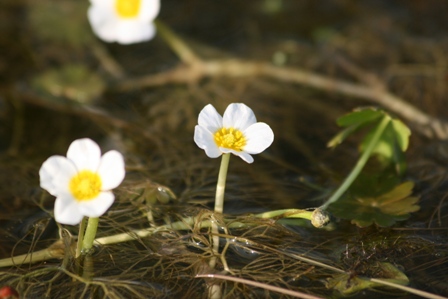A pond in your garden!
A pond will make a great addition to your garden. It is an oasis of nature, much appreciated in urban areas as well as in the country. It will embellish your garden, promote biodiversity, and can also be used as a reserve for watering your garden.
The number of ponds within the region is in decline, despite their importance on so many different levels. Individually, they play a social and educational role, as well as a landscaping function. As a network, when sufficiently dense, they contribute to the biological mesh, form an ecological corridor for numerous species, play a role in flood buffering and water purification, and form part of the regional landscape identity. |
Mare de fond de jardin en zone rurale |
Mare d'agrément | Farmers maintain numerous ponds within the territory, above all for use as water sources for livestock. The managers of nature areas create, restore and maintain them too, often for educational purposes. If you have a pond or would like to create one, you too can contribute to the ecological network and the embellishment of our landscape while also brightening up your garden. Even a very small pond is useful! |
Do you want to create or restore a pond? A few square metres is sufficient, and you should avoid exceeding 100 m². A spade is all you need to create a small pond, although earthmoving equipment will be needed for something larger. If possible, choose an area which is waterlogged in winter so that you do not have to dig down very far. Create an irregular shape for a natural effect, do not exceed 1 m to 1 m 50 in depth, and dig gentle slopes. Plant a few trees, but leave the pond open to the south for favourable sunshine. Do not introduce fish, which will attack frogs and other tritons, as well as vegetation. | Le Triton ponctué, futur compagnon de votre mare ? |
Renoncule aquatique | Do you want to add plant life to your pond? The best approach is to leave nature to its own devices! Whatever you do, suitable plants will develop there spontaneously, emerging from the soil or brought in on the wind or by animals. Be that as it may, it is possible to accelerate this process by planting and placing certain types of vegetation there. In which case it is important to make the right choices and to take a few precautions:
|
That’s it, you have created your pond, but does it still need water? A pond is by definition an environment which may dry out for part of the year. So there is no need to worry if there is no more water during the summer. The fauna and flora will be able to adapt to this. | |













